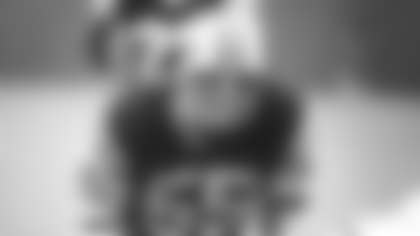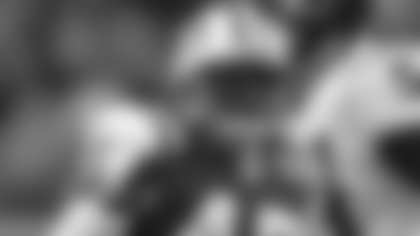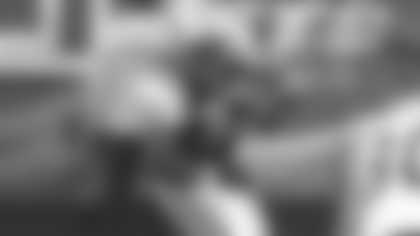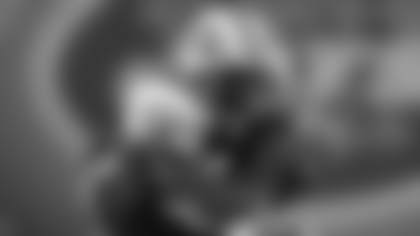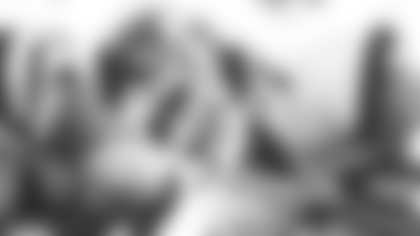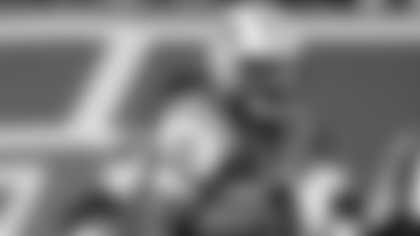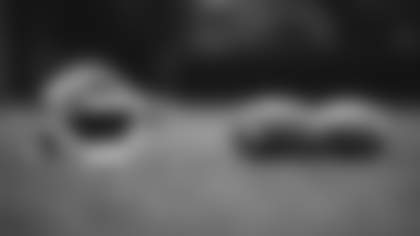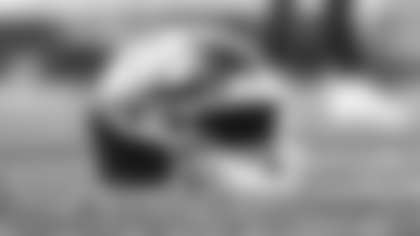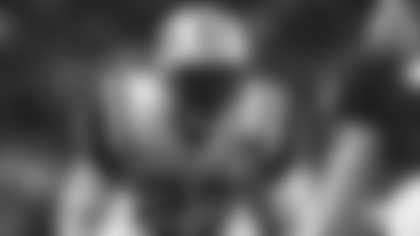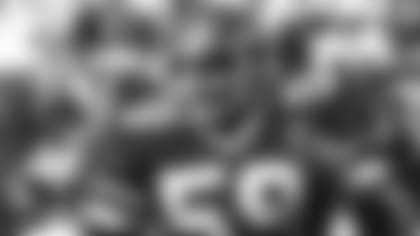
Someone normally only gets one chance to make a first impression.
But prior to the 1976 NFL Draft, first-year Jets head coach Lou Holtz had a few opportunities to be impressed by the University of Nebraska's Bob Martin. He was, and chose the defensive end in the sixth round.
"I was really happy about that because I was somewhat undersized and wasn't fully expecting to have an impact at that level," said the 6-foot-1, 217-pound Martin. "Lou Holtz told me after the fact that when he was at North Carolina State, he remembered a play that I made when I was a sophomore, I believe.
"And then he was the opposing coach when I went to the Hula Bowl and the Japan Bowl. I had a couple pretty decent games and he drafted me. Lou is a guy that had confidence in me. And from there on, it just worked out."
For things to work out in New York, Martin had to basically do it on his own. With a new coaching staff in place, rookies and veterans were essentially on even ground. And so first-year players couldn't benefit from the older players' experience and advice.
"Lou had a different perspective on how he was going to do things, and he brought in a lot a people, just a ton of rookies to try out. I think a lot more than, even at the time, was normal," Martin said. "Even before the preseason games started, they went through a lot of people. There were so many people going through the turnstiles at the time, there was nobody, individually, that took us under his wing.
"The first pro game I ever saw, I played in. That was in St. Louis, a preseason game. I think there were six preseason games at the time and we came in, it seemed like, six weeks prior to that. So we were there a long time."
A standout defensive end in college, Martin was also a stand-up defensive end. Which made the transition to outside linebacker with the Jets go much easier. Successful making the move, he earned a spot in the starting lineup during his first training camp.
Martin credits at least part of that to Mother Nature.
"I'll tell you, the reason I ever got the opportunity was there was a hurricane that came through (in August), Hurricane Belle," Martin said. "(The Jets-Giants game at Yankee Stadium was rescheduled two days later) and we were going to cancel or postpone a game (two days after that) against the Raiders. And Lou decided that no, we could go ahead and play the game.
"So I got the opportunity because of the hurricane to start a game in the preseason. And evidently, they liked what they saw and traded (second-year linebacker) Richard Wood (to Tampa Bay)."
Between Martin and Holtz, only one rookie would last through the 3-11 1976 season, and it wasn't the coach who was dismissed with one game left. Holtz's defensive coordinator Walt Michaels became the Jets' new head coach in 1977.
"It was the only time I made a transition from one coach to another other than from college to pro," Martin said. "For us, it was pretty easy. He was a defensive guy and had been. We just wanted to play and it didn't make too much difference to me who the coach was."
Separating a shoulder in the fifth game in 1977, Martin would miss most of New York's second-straight 3-11 campaign. But back and healthy the following season, he collected the most memorable of his five career interceptions.
"In Miami, (Bob) Griese was the quarterback, and he threw an ill-advised pass right to me. And in what I would call 'my sprint down the sideline' I got very close to scoring a touchdown, but I got pushed out at the half-yard line. It was a pretty long (26-yard) return. Well, to me it seemed like a pretty long return," Martin laughed.
After two games into his fourth season, Martin's time with the Jets came to an abrupt end.
"They sat me out the third game because somewhat of a contract dispute. You get a three-year contract and then you have the option year. I wasn't too happy," Martin said. "I think we were making $30,000 or $40,000 a year, and I thought that somebody who is starting and all that should be compensated a little bit better. So they waived me. But I had played four years and I had gotten my pension, so I was good."
Immediately claimed by San Francisco, Martin would finish the 1979, and what would be the final season of his NFL career, with the 49ers. What are among his fondest memories from his time with the Green & White?
"Being in New York and being with the guys. The first year when Joe (Namath) was on the team, it was sort of like traveling with a rock band. After games, all these groupies and stuff would be around, it was just an eye-opener for sure," Martin laughed.
"In retrospect, I really wish that I would have been able to play a few more years in New York because I think it was a great place to be, certainly a tremendous city. Things were looking up a little bit at that time, but it wasn't to be. Evidently, I didn't stand out too much to the coaching staff because they let me go. But I thought I had a pretty decent career with them. And I had a lot of fun, I really did."
Moving back to his native Nebraska when his playing days were over, Martin's second career was as a national sales manager for Valmont Industries. A steel fabricator, the company produced center pivot irrigation systems, light poles, and transmission structures.
Retired after 22 years, Martin and his wife, Sheri, make their home on a farmstead in Davey, Nebraska. They have three adult children: Lee, Jay, and Anne, who were each Division I athletes at the University of Nebraska; and four grandchildren.




